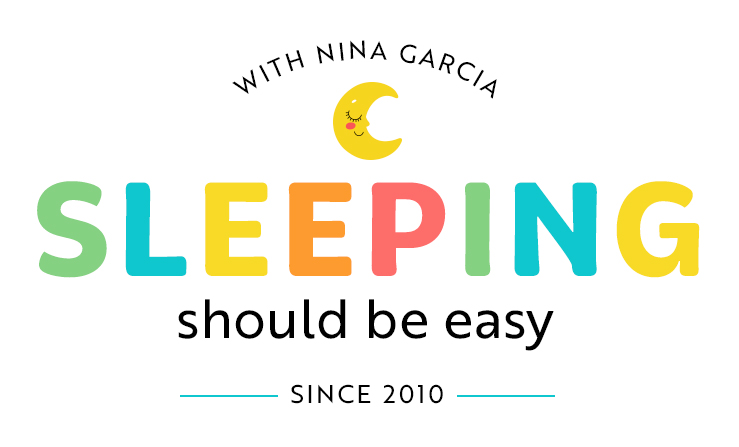How to Get Your Baby to Nap in the Crib
Wondering how to get your baby to nap in the crib instead of your arms, the swing, or by co-sleeping? Get tips to help you do just that!
 I was desperate.
I was desperate.
My newborn took long naps… but only in the swing. Any time I tried to put him down in the crib, he’d wake up screaming (or only sleep for a few minutes before waking up).
Another favorite way he’d nap was when someone was holding him. So, of course, I tried holding him as he started to drift off, planning to put him down once he was in a deep sleep. But he’d gotten so used to being held that he’d wake up as soon as I’d put him down.
For many parents, getting babies to nap in the crib feels like an impossible task. The newborn stage can be frustratingly unpredictable—what works for one nap completely flops for the next. And babies aren’t equipped to consistently put themselves to sleep until they’re a few months older.
Still, that doesn’t mean you give up or that you’re left with no options. By trying several of these tips, I was finally able to get my son, even as a newborn, to sleep in his crib.
Sure, we had our off days when we resorted to our old go-to methods. And it wasn’t until I finally sleep trained him once he passed the newborn stage that he consistently slept in his crib. But in the meantime, when you’re in pure survival mode in these early months, every tip is worth a try.
Hopefully, you can get your baby to nap in the crib longer, too:
Table of Contents
1. Put your baby down before he fusses
One common mistake many first-time parents make is waiting until the baby is fussy before putting him down for a nap.
Here’s the thing: fussiness is usually a sign that your baby is already overtired, making it that much harder to put him down in a crib. Instead, catch him when he’s still pleasantly sleepy and ready to nap to put him down, not when he’s fussy and fighting sleep.
Free resource: Did you know that his awake time might be affecting how well he sleeps? Join my newsletter and get One Mistake You’re Making with Your Baby’s Awake Time. Don’t make the same mistakes I did—help him fall asleep with this one simple trick! Grab it below:
2. Give it a few minutes
I’d feel so defeated each time I heard my baby fuss a mere few minutes after I had just put him down. Other times, I’d scoop him up if he so much as opened his eyes after his head hit the mattress. Somehow, I equated his being awake as a failure on my part.
I later learned that giving babies a few minutes to settle can be all it takes to get them to sleep in a crib. To start, be aware of your baby’s different cries. If she sounds like she’s simply fussing or whining, don’t feel compelled to pick her up right away. Instead, give her a few minutes to settle.
And if she happens to open her eyes when you put her down—especially when she’s not crying—don’t take that as your cue to start rocking her to sleep all over again. Instead, give her time to fall asleep lying down. (After all, we don’t always conk out the minute our heads hit the pillow, right?)
In doing so, you’re giving her an opportunity to learn, however gradually, to self-soothe, rather than expect you to pick her up at the slightest stir.
3. Use a mobile
Many parents swear by mobiles as a way to help their babies fall asleep in their cribs. If your baby takes to soothing sounds, a relaxing mobile can be a fantastic solution, one that’s only available in a crib.
The trick is to put her down awake but ready to sleep. Allow her to watch the mobile when she’s drowsy so that she can associate it with falling asleep.
Stick to using the mobile as a soothing device, not for entertainment. That way, she knows that the mobile signals sleep time, not play.
4. Copy your bedtime routine for naps
Does your baby fall asleep in the crib just fine at night? Part of that could be the bedtime routine you have in place.
To help him sleep in the crib during the day, follow a routine similar to your bedtime one. For instance, I did the same rituals for naps (other than bathing and changing into pajamas) as I did for bedtime, including:
- Changing into a new diaper
- Reading books
- Singing songs
- Swaddling
- Drawing darkening curtains
- Turning on white noise
These activities can signal to your baby that, just as he sleeps at night in the crib, so too can he sleep in it for naps.
5. Put your baby down drowsy with a pacifier
Some babies take to sucking on a pacifier to fall asleep. See if you can help yours take advantage of the soothing sensations of a pacifier with taking a nap in the crib.
Once she’s drowsy but still awake, lay her down in the crib. Then, insert a pacifier in her mouth so she has something to soothe herself with even if she’s out of your arms.
6. Use a swaddle
As much of a fan as I am about putting a baby down drowsy but awake, it doesn’t always work. And considering that you’re in the throes of the newborn stage, sometimes you do what you have to do, including trying the exact opposite.
Start by swaddling your baby so she feels snug and less likely to flail her arms and wake herself up. Then, hold and rock her slightly in your arms until she’s completely asleep before putting her down in the crib. Even if she’s lying in the crib, the sensation won’t feel as odd because she’s tucked in a swaddle.
7. Decrease the difference in sensation
Babies can startle awake when they’re put in a crib because being in your arms and being in the crib are so different.
Instead, decrease the difference in the sensation between the two. For instance, you can:
- Move slowly as you walk to the crib
- Keep your hand behind her head and neck for a minute after putting her down
- Keep your hand over her tummy for a minute after putting her down
- Bend over the crib and keep your chest touching hers for a minute before standing back up
8. Use a sleep suit
Some babies don’t take to swaddles and get frustrated when they can’t suck their hands or try to maneuver themselves out of them.
One solution is to use a sleep suit. This allows your baby to feel snug and contained, but still have her arms and hands free to suck. It’s also a fantastic transition to ease her out of a swaddle she might be fast outgrowing.
9. Create a conducive sleep environment
A conducive sleep environment for your baby can help her not just sleep in the crib, but take long naps as well. As I say in my book, How to Get Your Baby to Sleep Without Being Held:
“When your arms are no longer an option and a stroller is too unrealistic to rely on all the time, the right environment can help him sleep on his own.
Think of the optimal sleep environment as giving him a leg up toward better sleep. Why make sleep harder with difficult sleeping arrangements when you can make simple changes to help him doze off easily?”
Start by getting darkening curtains to block out light from outside. Don’t worry—the room won’t be completely pitch black in case you’re worried she might confuse night with day. But it can help her sleep better when the room is darker than usual.
Then, turn on white noise, either using a white noise machine, fan, heater, or an audio app. This can prevent her from being startled awake by sudden noises.
And start the nap routine in the room where the crib is. That way, placing her down is easier than starting the routine from a different room and moving to a different one.
10. Stay consistent with your efforts
Caring for a newborn is a balance of giving your baby a chance to sleep in the crib while helping her when she can’t. The key is to constantly give her that chance each time. After all, when else can she learn to sleep in the crib when she isn’t given the opportunity to?
Think of daycare sleeping arrangements where, because there simply aren’t many options, those babies somehow learn to sleep in a crib. The same can be true for your baby. She can associate the crib with sleep and get used to it the more consistent and repetitive you are with putting her in it.
Conclusion
Did that just happen? I asked myself after I had put my baby in the crib. I was rocking him in my arms, but he kept arching his back and straightening his body, as if to say, “I don’t like being held like this.”
Maybe he doesn’t want to be rocked to sleep, I thought. So, I put him down in his crib with my hand on his tummy. A few minutes later, he was still awake but getting sleepy. I needed a break so, even though he wasn’t sleeping yet, I just stepped into the living room. I checked on him three minutes later and, lo and behold, he was asleep.
Did he just fall asleep in the crib awake?
I didn’t want to jinx myself, especially with his naps, but count my lucky stars, he actually did.
Get more tips:
- What to Do When Your 3 Month Old Won’t Nap
- 4 Things to Do When Your Overtired Baby Won’t Stop Crying
- Watch Out for These 7 Baby Tired Signs You Might Be Missing
- What to Do When Your Baby Won’t Nap Unless Held
Don’t forget: Join my newsletter and get One Mistake You’re Making with Your Baby’s Awake Time—at no cost to you:

